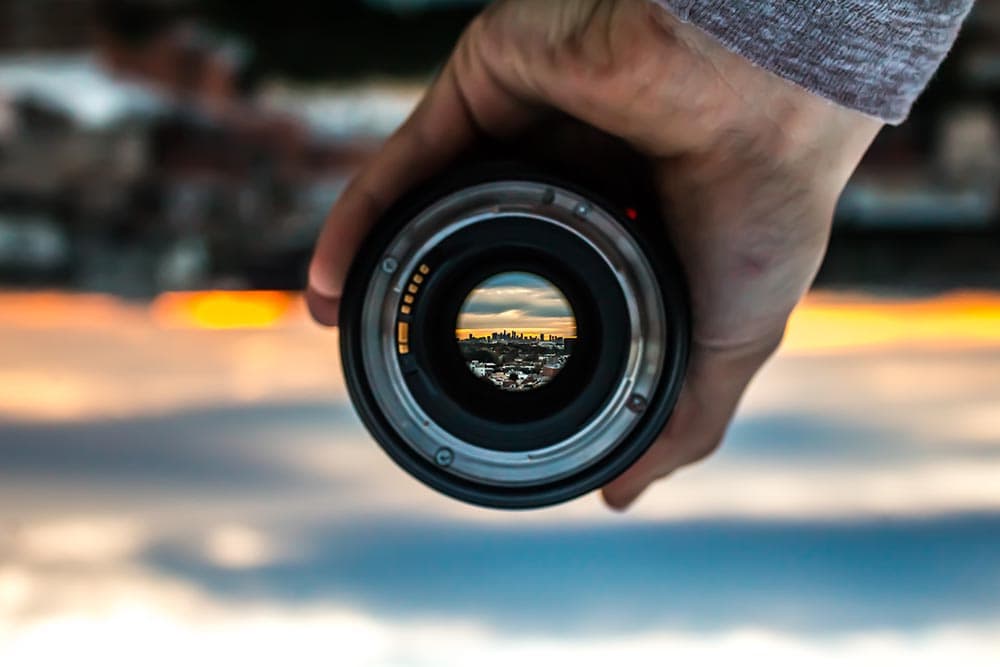What Is the Ideal Focal Length for Portraits?
Last Updated on

Portrait photography is an area where many novice and amateur photographers start to learn the basics and get into the industry. But if you’re looking to get the best portrait photographs, it all starts with using the right equipment.
But what focal length do you want when you’re taking portraits? That depends on what you’re looking for. Sometimes, a 35mm lens is the way to go, and other times, you want an 85mm lens.
We break it all down for you here, so the next time that you head out for your next photo shoot, you’ll know exactly what to use to get great pictures.

What Is the Best Focal Length for Portraits?
While it’s primarily up to the photographer, many experts view an 85mm focal length as the best option for individual portraits. However, if you’re looking for a lens to take group portraits or want more of the background highlighted, a 50mm or a 35mm can be an outstanding choice too.
Just figure out what you’re looking for, know what each focal length does to the photo, and go from there to see what works best for your portrait.
Different Focal Lengths for Portraits
There are numerous different focal lengths out there, and since there are so many options, we wanted to highlight a few of them and how they can affect the portrait photos that you’re trying to take.
<35mm
There are plenty of options under 35mm, but two of the most common ones are 24mm and 28mm. No matter the size, if it’s smaller than 35mm, it’s not the best choice for portraits. The reason is simple: With a focal length smaller than 35mm, you have to get really close to the subject.
Also, small focal lengths can distort facial features, making them terrible for portraits.

35mm
35mm focal length lenses are among the most common types on the market today, and they’re great for portraits. You’ll still need to get relatively close to the subject, but if you can get at the same height as your subject, they do a great job.
They’ll also capture some of the background around your subject, so if you’re taking portrait photos out in nature, it’s an outstanding choice. Furthermore, since it has a wide field of view, a 35mm focal length can be ideal if multiple subjects are in the portrait.
50mm
If you have more space to work, a 50mm focal length is great for waist-up portraits. You’ll need to get farther away from your subject to prevent distortion, but if you have enough room, it’s worth it.
A 50mm lens captures a bit of the background but typically does a great job of blurring it out, giving you tons of versatility for portraits.

85mm
If you’re looking for a single-person portrait and don’t want to capture much of the background, an 85mm lens is ideal. However, it does require you to be significantly farther from your subject.
It’s not the most versatile lens, but it can give you portrait photographs that stand out and have a professional edge to them.
You can’t capture full-body portraits with an 85mm lens, but it’s still something that you’ll want to have in your repertoire if you’re looking to get into professional portrait photography.
135mm
135mm focal length lenses aren’t ideal for novice portrait photographers, but if you take the time to figure out how to use them, they can be a great choice. They really only work for partial body or even face-only portraits, but they can give you a clear image without much of a background.
You’ll likely have to move around a bit to get the exact image that you want, but there’s no denying that you can get awesome portrait shots with a 135mm lens.

>135mm
While you can technically take portrait photographs with lenses larger than 135mm, the truth is that it’s typically more trouble than it’s worth. You can get almost identical results with an 85mm or a 135mm lens, and you won’t have to take the pictures from a quarter mile out.
Still, if you’re looking for a challenge and want to mix things up, try a lens with a focal length larger than 135mm. Just don’t bring it to a professional photoshoot.

Final Thoughts
If you’re still unsure about what focal length to use for portraits, we recommend going out with a friend and using them all. Experiment and practice!
The best way to learn is to do, and when you see the differences for yourself, you’ll know just what focal length to use when you don’t have the time to cycle from lens to lens.
Featured Image Credit: Devin Avery, Unsplash
About the Author Robert Sparks
Robert’s obsession with all things optical started early in life, when his optician father would bring home prototypes for Robert to play with. Nowadays, Robert is dedicated to helping others find the right optics for their needs. His hobbies include astronomy, astrophysics, and model building. Originally from Newark, NJ, he resides in Santa Fe, New Mexico, where the nighttime skies are filled with glittering stars.
Related Articles:
What Is the Best Binocular Magnification for Hunting? Optical Features Explained
How to Clean a Refractor Telescope: Step-by-Step Guide
How to Clean a Telescope Eyepiece: Step-by-Step Guide
How to Clean a Rifle Scope: 8 Expert Tips
Monocular vs Telescope: Differences Explained (With Pictures)
What Is a Monocular Used For? 8 Common Functions
How to Clean a Telescope Mirror: 8 Expert Tips
Brightfield vs Phase Contrast Microscopy: The Differences Explained
